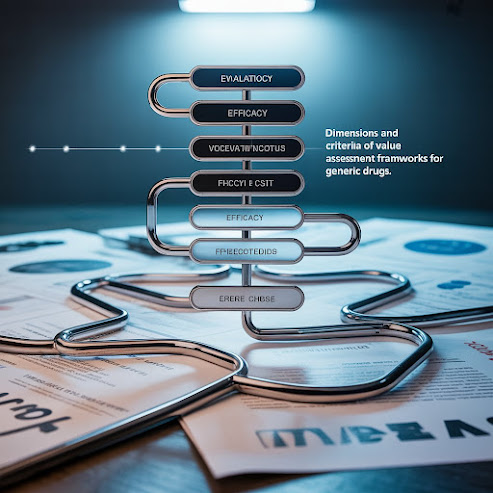Computational Neuroscience | #Sciencefather #Phenomenological #NeuroAI
- Get link
- X
- Other Apps
🧠 Understanding Individual Differences in Computational Neuroscience with a Latent Input Approach 🔬
🌍 Introduction: Decoding the Mind with Computational Models
The human brain is a highly complex system, with individual differences influencing cognitive functions, learning capabilities, and even mental disorders. Computational neuroscience aims to model these differences by simulating neural processes. However, traditional approaches often struggle to account for the unique neural signatures of individuals. This is where the latent input approach comes into play—an innovative method that enhances our understanding of individual variability in brain function.
📊 What is the Latent Input Approach?
A latent input approach leverages machine learning and probabilistic modeling to identify hidden (latent) variables influencing neural activity. Instead of treating all individuals as identical within a model, this approach personalizes computational simulations by:
✅ Capturing individual neural response variations
✅ Identifying hidden factors that contribute to cognitive and perceptual differences
✅ Improving prediction accuracy for brain-related disorders and behaviors
🔬 The Role of Individual Differences in Neuroscience
Every individual exhibits unique brain connectivity patterns, cognitive flexibility, and susceptibility to neurological conditions. Traditional computational models often rely on group-level averages, which can obscure critical person-specific neural mechanisms. By incorporating latent inputs, researchers can:
🧩 Differentiate between subjects based on their unique neural signatures
🧠 Enhance brain modeling by reducing noise from generalized assumptions
⚡ Optimize neuroimaging data interpretation in fields like fMRI, EEG, and MEG
🏗️ How Does the Latent Input Model Work?
The latent input framework works by introducing hidden parameters that interact with neural computations. These parameters help:
🔹 Define subject-specific factors that influence neural network activation
🔹 Use Bayesian inference and deep learning algorithms to estimate these latent variables
🔹 Enhance predictions of cognitive function, learning rates, and neurological disorders
For example, in decision-making tasks, a latent input approach can uncover how different individuals weigh risk vs. reward, providing deeper insights into cognitive flexibility and impulsivity.
🏥 Applications in Neuroscience Research
The latent input approach has vast implications across multiple domains of neuroscience, including:
1️⃣ Neuropsychiatric Disorder Research
By analyzing hidden cognitive traits, researchers can identify individual biomarkers for conditions like schizophrenia, ADHD, and depression. This enables:
🔬 Personalized diagnosis and treatment strategies
🧪 Predictive models for treatment responses
2️⃣ Brain-Computer Interfaces (BCIs)
BCIs rely on real-time neural decoding, which varies significantly across individuals. A latent input approach can:
⚙️ Optimize neural signal processing for better control accuracy
💡 Enhance adaptive learning in AI-driven BCIs
3️⃣ Cognitive and Perceptual Research
Understanding attention, memory, and perception at an individual level can improve:
📖 Education strategies tailored to different learning styles
🎮 Human-AI interaction models in gaming and virtual environments
🚀 Future Directions: Personalized Neuroscience
With the integration of latent input modeling and AI-driven neuroscience, the future of computational neuroscience is heading toward personalized brain models. This can lead to:
✅ Better predictive models for neurodegenerative diseases
✅ Tailored rehabilitation strategies for stroke and trauma patients
✅ Enhanced neuroadaptive technologies in artificial intelligence
🎯 Conclusion
The latent input approach is revolutionizing computational neuroscience by acknowledging individual variability rather than relying on one-size-fits-all models. By incorporating hidden variables into neural simulations, researchers can uncover deeper insights into cognition, behavior, and neurological health. As neuroscience continues to evolve, this approach will play a pivotal role in making brain research more accurate, personalized, and impactful.
🌱 The future of brain science is personalized, data-driven, and powered by latent insights! 💡🔍
#ComputationalNeuroscience #NeuralVariability #LatentInputModel #BrainResearch #AIinNeuroscience #Neuroinformatics #CognitiveModeling #Neurotechnology #PrecisionNeuroscience #NeuralNetworks #BrainComputing #PersonalizedMedicine #NeuroAI #MachineLearning #NeuroscienceInnovation
#Phenomenology#ResearchAwards#
Twitter: https://x.com/compose/post
Instagram: https://www.instagram.com/
Pinterest: https://in.pinterest.com/
Blogger: https://phenomenological21.
- Get link
- X
- Other Apps




Comments
Post a Comment